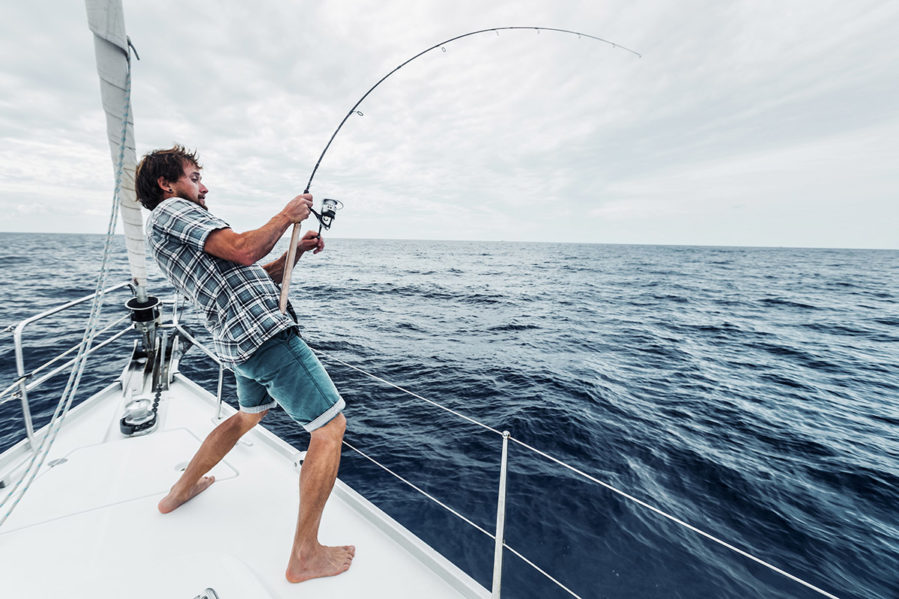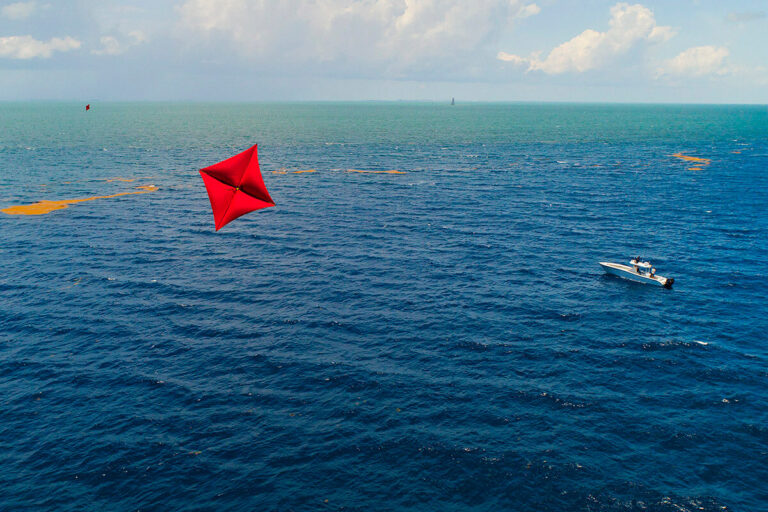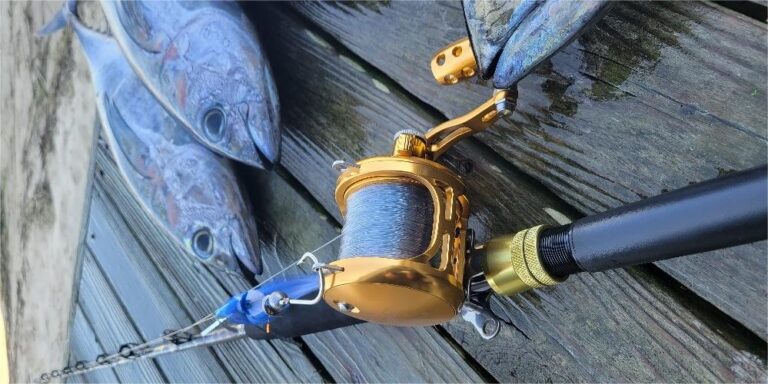To ship fishing rods, you need to package them securely and choose a shipping method that accommodates their length and fragility. Fishing rods must be packaged in a strong, sturdy tube with padding to protect against damage during transit.
Once packaged, you can choose between shipping through a postal service or a specialized shipping company that caters to oversized and delicate items. Ensure that you provide accurate dimensions and weight for shipping quotes and verify any restrictions or regulations with the chosen carrier.

Credit: norrik.com
Packing Materials
Choosing The Right Box For Shipping Fishing Rods
When it comes to shipping fishing rods, it’s crucial to choose the right box to ensure the safe delivery of your prized possessions. Here are some key points to consider:
- Opt for a sturdy and durable box: Choose a box that is strong enough to withstand the rough handling during transit. Look for cardboard boxes that are specifically designed for shipping or moving purposes.
- Select the appropriate size: Ensure that the box is large enough to accommodate the fishing rods without bending or breaking them. At the same time, avoid choosing a box that is too big, as it may leave too much space for the rods to move around inside.
- Consider protective features: Look for boxes with additional protective features such as double-layered walls or corrugation for added strength. These features can provide an extra layer of protection for your fishing rods during shipping.
Wrapping The Rods With Protective Material
To ensure that your fishing rods remain intact and undamaged during transit, it’s essential to wrap them with protective materials. Here’s how:
- Start with bubble wrap or foam tubing: Begin by wrapping the base and tip of each fishing rod with bubble wrap or foam tubing. This will provide cushioning and safeguard the most vulnerable parts of the rod.
- Use rod sleeves or socks: Slide the fishing rods into rod sleeves or socks to provide an additional layer of protection. These sleeves are specifically designed to prevent scratches and minor impacts that can occur during transportation.
- Secure with tape: Once the rods are wrapped, secure the protective materials in place using packing tape. This will keep everything intact and prevent any accidental unwrapping during transit.
Securing The Rods Inside The Box
Now that your fishing rods are properly wrapped, it’s time to secure them inside the box to prevent any movement or damage. Follow these steps:
- Add packing material: Fill the empty spaces in the box with packing peanuts, crumpled newspaper, or other cushioning materials. This will help absorb any shocks during transit and keep the fishing rods firmly in place.
- Arrange the rods strategically: Place the wrapped fishing rods side by side in the box, ensuring that they are parallel to one another. Avoid stacking them on top of each other, as this can increase the risk of breakage.
- Seal the box securely: Once the rods are positioned inside the box, seal it securely using strong packing tape. Make sure to reinforce the corners and edges of the box to provide extra protection.
By following these steps, you can ensure that your fishing rods are packed securely for shipping, minimizing the risk of damage during transit. Remember to choose the right box, wrap the rods with protective material, and secure them inside the box properly to provide maximum protection.
Happy shipping!
Proper Handling And Labeling
When shipping fishing rods, it is crucial to take proper precautions to ensure they arrive at their destination undamaged. Whether you’re sending your rods for repair, selling them online, or taking them on a trip, following these guidelines for handling and labeling will help protect your valuable fishing gear.
Taking Precautions To Avoid Damage During Transit
To prevent any potential damage during transit, consider the following tips:
- Choose the right packaging materials: Utilize sturdy cardboard tubes or shipping cases designed specifically for fishing rods. These containers offer additional protection against impact and compression.
- Wrap the rods securely: Use protective materials such as bubble wrap, foam, or packing paper to cushion the rods and prevent them from shifting inside the packaging. Make sure the wrapping is tight enough to keep the rods in place but not too tight that it causes pressure on the rods.
- Disassemble and pack the rods carefully: If possible, separate the rod sections and wrap each one individually. This helps to minimize the risk of breakage during transportation.
- Add extra protection to fragile parts: Pay special attention to the rod tips, guides, and other delicate components. Consider using extra padding like foam or pipe insulation to safeguard these vulnerable areas.
- Seal the packaging properly: Securely tape the ends of the packaging to prevent the rods from sliding out or becoming damaged during handling. Reinforce the seals with strong packing tape.
Labeling The Package Correctly For Easy Identification
Correct labeling not only ensures that your package reaches the desired destination promptly but also helps with easy identification and handling. Follow these guidelines for proper labeling:
- Clear and visible recipient information: Clearly write or type the recipient’s name, address, and contact information on the package. Ensure the text is legible and large enough to be easily read by postal workers.
- Indicate the fragility of the contents: Use labels or mark the package as “fragile” or “handle with care”. This alerts those handling the package to take extra caution and reduces the likelihood of mishandling that may lead to damage.
- Declare the package as fishing rods: Clearly mention that the package contains fishing rods, either by adding a label or writing it directly on the packaging. This helps to prevent any confusion during transit and ensures proper care by the shipping provider.
- Display return address: Include your own address as the return address on the package. In case of any delivery issues, having a return address readily visible ensures the package can be returned to you.
By following these proper handling and labeling techniques, you can significantly reduce the chances of damage during shipping and ensure your fishing rods reach their destination in pristine condition. Remember, taking the time to protect your valuable gear is well worth it in the long run.
Safe travels!
Selecting The Appropriate Shipping Service
Shipping fishing rods may not be as straightforward as shipping smaller items. Due to their size and fragility, it’s important to select the appropriate shipping service to ensure your fishing rods arrive safely and undamaged at their destination. When it comes to choosing a shipping service for your fishing rods, consider the following key points:
- ### comparing shipping options for fishing rods:
- Research different shipping carriers: Compare various shipping carriers to find the one that offers the best rates and services for shipping fishing rods.
- Consider specialized shipping services: Look for carriers that specialize in shipping fragile and oversized items, as they may have experience handling fishing rods.
- Evaluate delivery times: Determine the estimated time it will take for the shipping carrier to deliver your fishing rods to the intended destination. Keep in mind any time constraints you may have.
- Check for additional fees: Be aware of any extra fees associated with shipping fishing rods, such as oversize or overweight charges. Factor these costs into your decision-making process.
- ### insurance and tracking: Ensuring security and peace of mind:
- Obtain shipping insurance: Protect your investment by purchasing shipping insurance for your fishing rods. This will provide coverage in case of loss, damage, or theft during transit.
- Consider tracking services: Opt for a shipping service that offers reliable tracking capabilities. This allows you to monitor the progress of your fishing rods and provides an additional layer of security and peace of mind.
- Retain proof of shipment: Always keep a copy of the shipping receipt or tracking number as proof of shipment. This will come in handy in case you need to file a claim for lost or damaged items.
Remember, selecting the appropriate shipping service is crucial to ensure the safe delivery of your valuable fishing rods. Compare different carriers, consider specialized services, and prioritize insurance and tracking options to guarantee security and peace of mind throughout the shipping process.
Conclusion
Shipping fishing rods can be a delicate process, but with the right methods and materials, you can ensure that your rods arrive safely at their destination. Start by properly preparing your rods for shipment, using bubble wrap or rod sleeves to protect them from damage.
Choose a sturdy shipping box and secure the rods with packing materials to prevent any movement during transit. Label the package clearly and consider adding insurance for added protection. Research shipping options and choose a reliable carrier that specializes in shipping fragile items.
Remember to track your package and communicate with the recipient to ensure a smooth delivery. By following these steps, you can ship your fishing rods with confidence, knowing that they will reach their destination in excellent condition. Happy fishing!





